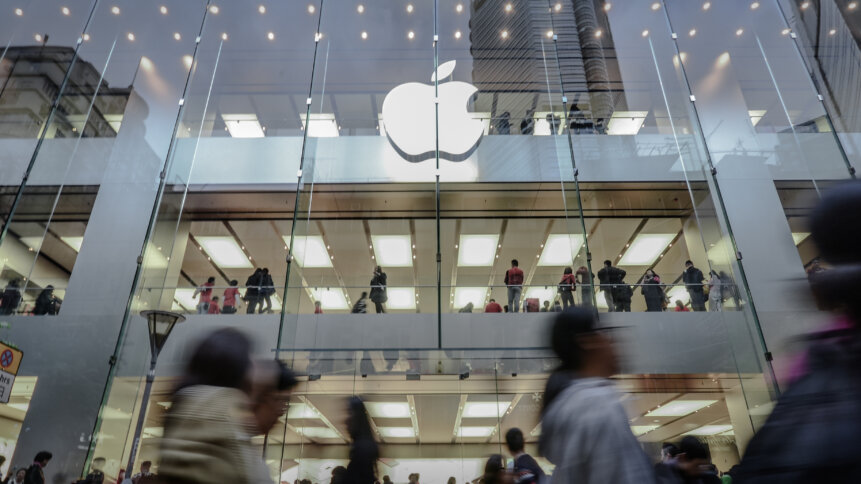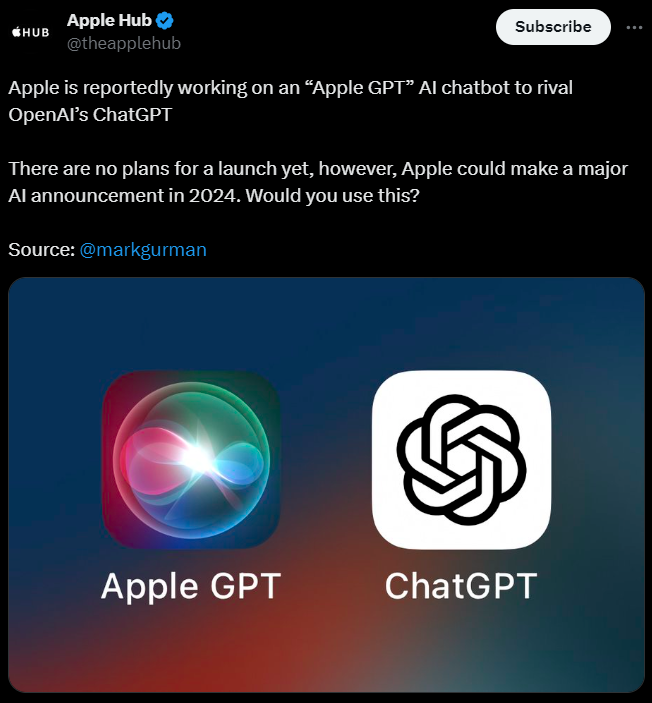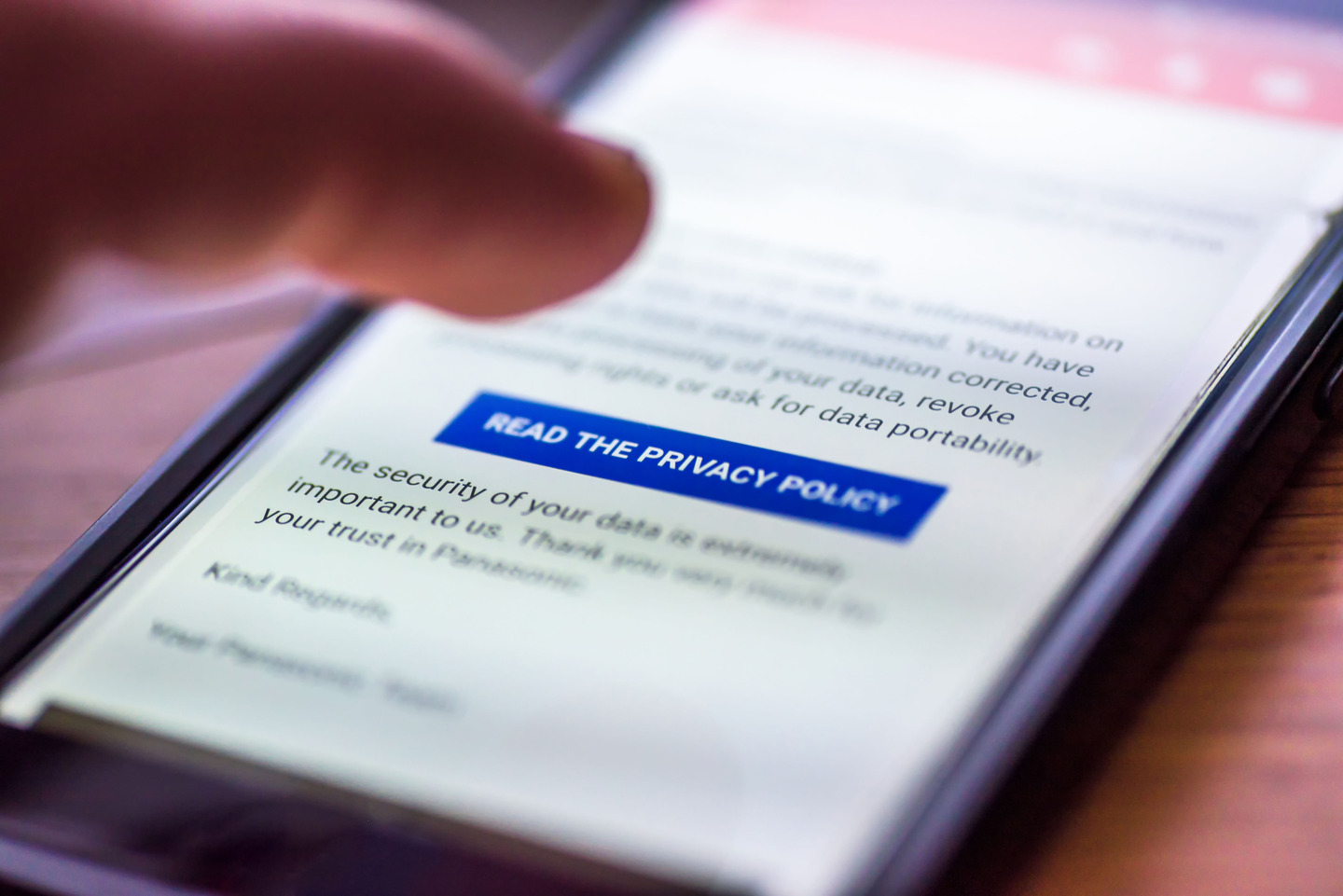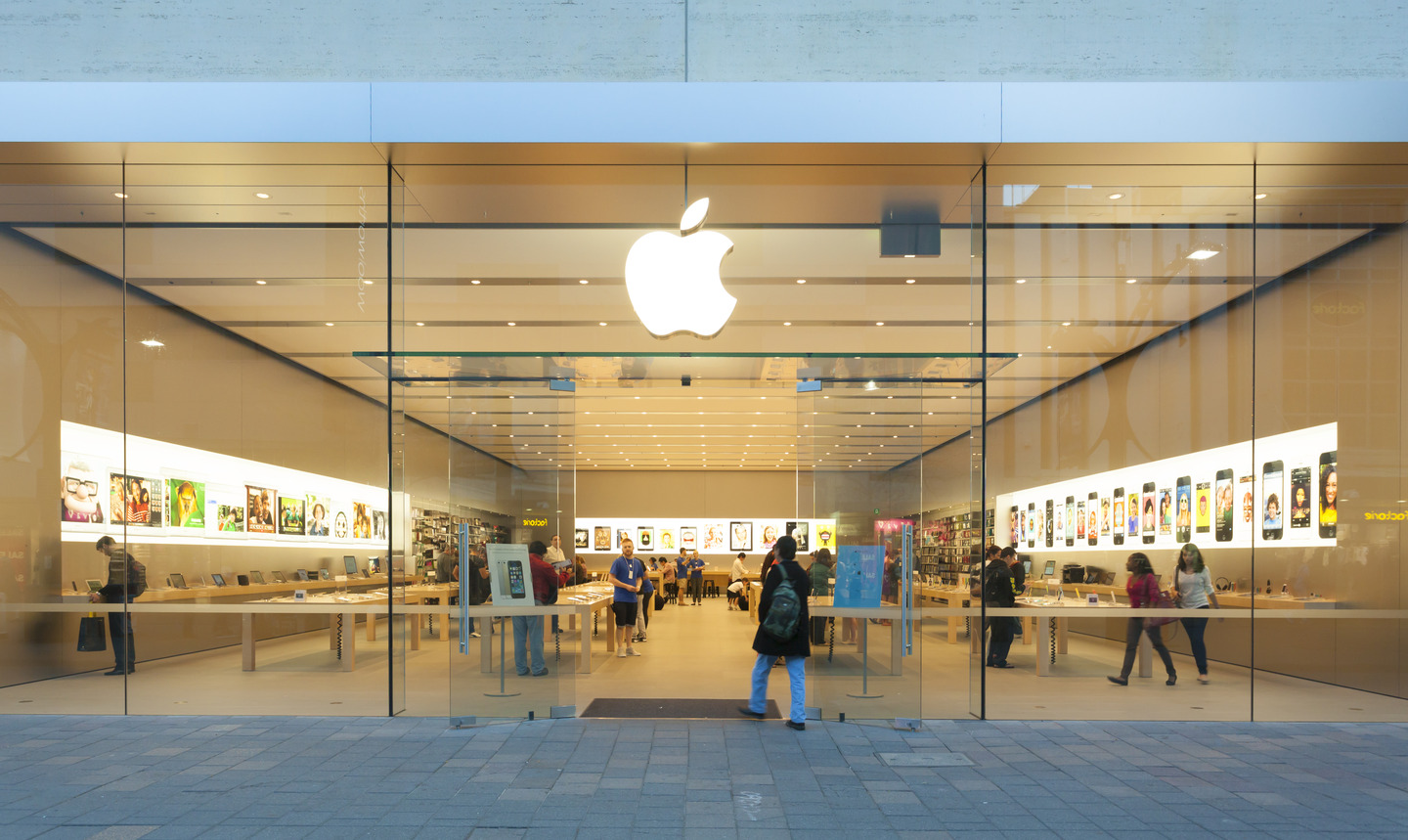Apple GPT: An AI work-in-progress?

- Apple needs a clear strategy for releasing AI technology to consumers.
- Rumors that Apple has been left behind in AI look set to be confounded next year.
- Apple has been pushing forward with AI in small ways.
Since OpenAI’s ChatGPT debuted last November, tech leaders have not been very subtle about the potential of AI and their plans for the technology. Apple Inc. is the only big tech firm that has yet to jump on the generative AI bandwagon. But, like the rest of Silicon Valley, the company may soon take bigger swings.
All this while, Apple has been approaching AI cautiously, with a product-oriented focus. Even during Apple’s annual developer’s conference this year, the WWDC 2023, the company subtly touted how much work it was doing in state-of-the-art AI and machine learning.
With its usual determination to be different, Apple doesn’t actually use the term “artificial intelligence” or even the more precise “generative AI” — it prefers the more academic phrase “machine learning” or talks about the features the technology enables. One example of this strategic coyness is that during the WWDC 2023, Apple announced that AirPods will now use “Adaptive Audio” to analyze sound around its user and adjust themselves accordingly. The feature allows the AirPods Pro to automatically turn off noise canceling when the user engages in conversation.
Although Apple didn’t frame that as a machine learning feature, the solution is based on AI models. On top of that, the company has made AI headway in other areas, including improvements to Photos and iPhone searches. There’s also a smarter version of auto-correct coming to its mobile devices this year.
Apple also mentioned several other new features that used the company’s skill in neural networks, such as the ability to identify fields to fill out in a PDF. The Photos app will also be able to differentiate between your dog and other dogs, automatically recognizing your pup the same way it identifies people who frequently appear in your pictures.
A technology analyst from Wedbush Securities, Daniel Ives, told The Atlantic that he thinks Apple’s new AI features amount to “just the appetizer before the main entrée.” His team has estimated that the company has spent US$8 to US$10 billion on AI in the past four or five years—the same amount that Microsoft invested in OpenAI in January—and Apple is reportedly on the hunt for AI talent.
However, its main AI product, the Siri voice assistant, has stagnated in recent years. But from how Chief Executive Officer Tim Cook put it during a conference call in May, Apple will be adding AI to more of its products, but, he said, on a “very thoughtful basis.”
Cook also said that though the technology has potential, a “number of issues still need to be sorted.” However, unlike its rivals, Apple wants AI models on its devices, which build bigger models with server farms, supercomputers, and terabytes of data.
“The new autocorrect feature is imposing because it’s running on the iPhone, while models like ChatGPT require hundreds of expensive GPUs working in tandem,” a report by CNBC indicated.
Apple GPT – an AI chatbot in iPhones soon?

A consumer “Apple AI” product is aimed for next year. Source: Twitter
Apple has been so quiet about its AI progress that it has been accused of falling behind. While ChatGPT can write you an essay, Siri can set your morning alarm and not much else. But hints indicate Apple is pushing forward with AI in small ways.
Albeit advancing by the incrementalist approach, it nonetheless still might be the future of where this technology is headed. Indeed, according to people who know the efforts, the iPhone maker has built its framework to create large language models — the AI-based systems at the heart of new offerings like ChatGPT and Google’s Bard.
“With that foundation, known as ‘Ajax,’ Apple also has created a chatbot service that some engineers call ‘Apple GPT,'” according to a report by Bloomberg. Perhaps, behind the scenes, Apple has grown concerned about missing a potentially paramount shift in how devices operate. “And Apple’s devices, which produced revenue of nearly US$320 billion in the last fiscal year, could suffer if the company doesn’t keep up with AI advances,” the report added.
YOU MIGHT LIKE

Can zero-trust LLMs overcome poisoned generative AI?
Apparently, in recent months, the AI push has become a significant effort for Apple, with several teams collaborating on the project, sources told Bloomberg. The work includes trying to address potential privacy concerns related to the technology. For context, on-device AI bypasses many data privacy issues that cloud-based AI faces, and Apple needs to collect less data when the model can be run on a phone.

There may be fewer privacy issues on an Apple AI running on-device.
It also ties in closely with Apple’s control of its hardware stack, down to its silicon chips. Apple packs new AI circuits and GPUs into its chips every year, and its control of the overall architecture allows it to adapt to changes and new techniques. “That’s why Apple began laying the foundation for AI services with the Ajax framework, as well as a ChatGPT-like tool for use internally,” Bloomberg said.
What exactly is the status of “Apple GPT”?
Simply put, Apple is developing new AI tools but still needs to figure out how to commercialize them. Ajax was first created last year to unify machine learning development at Apple, according to the people familiar with the effort. Then a tiny engineering team made the chatbot app as an experiment at the end of last year.

If you’re Apple, how do you commercialize your investment in AI?
“Its rollout within Apple was initially halted over security concerns about generative AI, but has since been extended to more employees. Still, the system requires special approval for access. There’s also a significant caveat: any output from it can’t be used to develop features bound for customers,” Bloomberg said, according to sources.
Apple employees indicated the tool replicates Bard, ChatGPT, and Bing AI and doesn’t include novel features or technology. The system is accessible as a web application and has a stripped-down design not meant for public consumption. “As such, Apple has no current plans to release it to consumers, though it is actively working to improve its underlying models,” Bloomberg said.
The conclusion, for now, lies in the fact that beyond the state of the technology, Apple is still trying to determine the consumer angle for generative AI. While the company doesn’t yet have a concrete plan, Bloomberg said people familiar with the work believe Apple aims to make a significant AI-related announcement next year.










